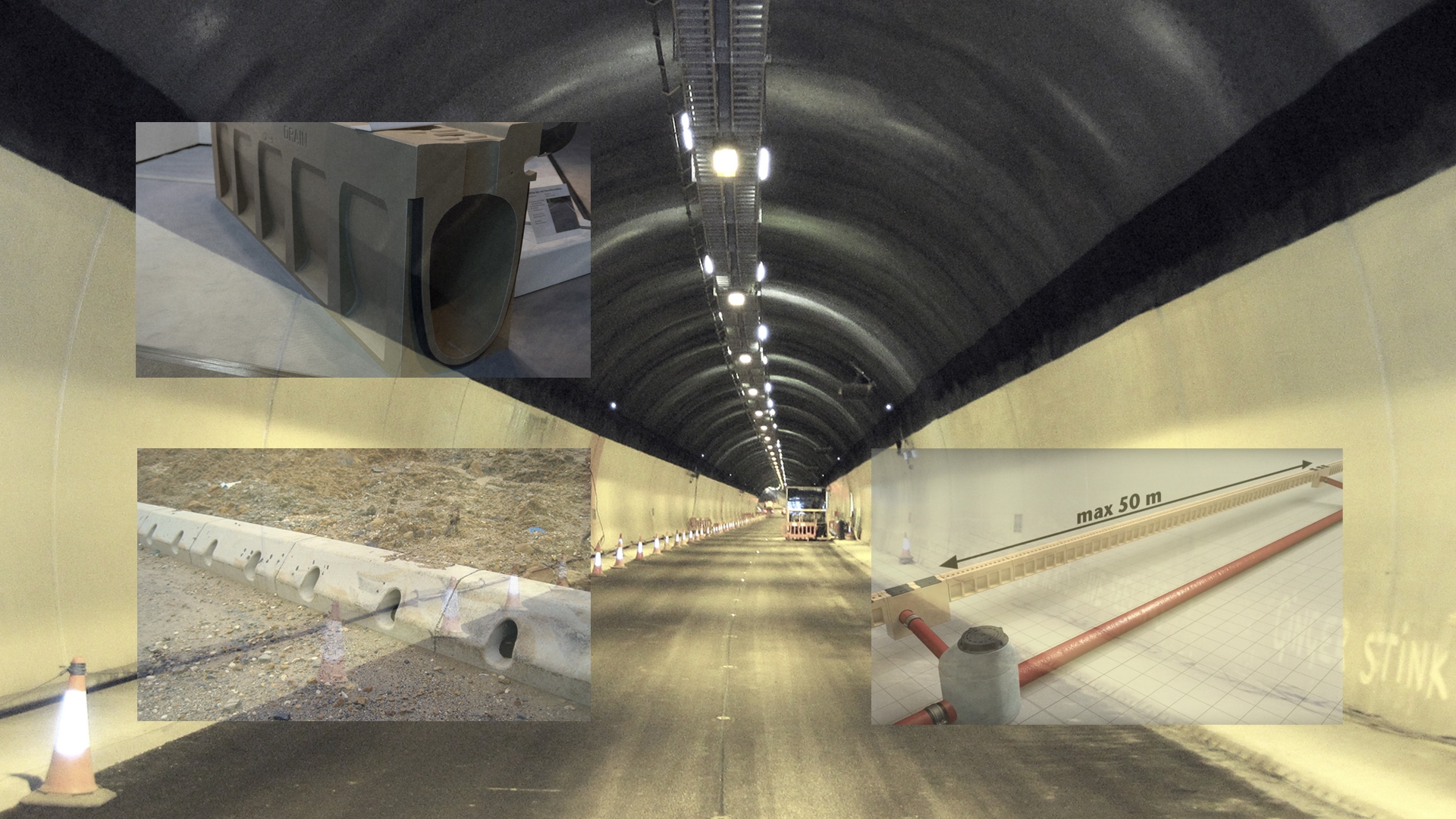Well designed space saving tunnel drainage

On 15th July 2015 16,500 liters of petrol caught fire inside the steep subsea tunnel, Skatestraum tunnel in Sogn og Fjordane, after a tank trailer broke loose from the truck and ran into the tunnel wall. The tank got perforated in the crash, and the petrol leak out and run nearly 500 meters down towards the lowest point of the tunnel. The petrol ignited and caused a 400 MW fire, and only coincidences made this an incident without fatalities. The accident investigation board recommended the tunnel owner to revise its requirements for tunnel drainage systems, so that they are designed to handle large spills of dangerous liquids carried by dangerous gods vehicles. This case, highlights the importance with a drainage system and shows us how crucial such a system are in tunnels with a steep climb.
The use of polymer concrete channel body like the one we find in a product like ACO Drain can give a positive Life Cycle Cost (LCC). In the ACO Drain solutions quartz fillers and reaction resin make the material waterproof, meaning it is suitable for tunnel construction. Its resistant to both flames, frost and de-icing salt and the polymer concrete give also a low maintenance. The low degree of roughness means that any dirt deposits can be washed away with ease. The rigidity of the polymer concrete and the channel structure make it possible to create a thin wall with a maximum flow cross-section. Compared to concrete kerb slot channels, the ACO tunnel channel offers space savings of up to 25%, leaving more room for factors such as cable laying in the emergency walkway.
A drainage system like ACO Drain can play a key safety role, protecting road users in any event where high volumes of liquid are discharged onto the road surface. Ensuring the rapid removal of potentially hazardous chemicals or fuels from the surface and safely moving them away from the incident without any leakage into surrounding soil and groundwater and these requirements are often critical aspects of the drainage system’s design specification.

 En
En 




